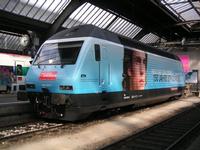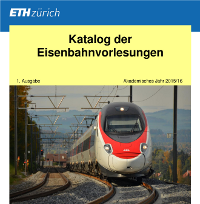|
|||||||||||
Risks and opportunities of innovative traction systems in a competitive market
Direction
ETH Zurich
Prof. Dr. Ulrich Weidmann
Institute for Transport Planning and Systems (IVT)
HIL F 13.1
Stefano-Franscini-Platz 5
8093 Zurich
Tel: +41 44 633 33 50
Fax: +41 44 633 10 57
Overview
The Alliance for Global Sustainability (AGS) project, "Role of Innovative Technology for Promoting Sustainable Mobility" analyzes a future structure of an innovative drive system vehicle fleet and its contribution to sustainable mobility. Innovative drive system vehicles include fuel cell, gas hybrid, and electric cars. The research project's main objective is to analyze the transition (change management) of innovative drive systems from today's status as a niche market product to a mass-market. The research project of Gian Carle will analyze the participants in, and the economic interactions of, the innovative drive systems market. It will be completed using the model of Porter (1999; 2000) using a stakeholder dialog. The dialog will ask stakeholders from the mobility and energy sectors about strategies and visions of companies in these sectors. The dialog should provide answers on how to solve the chicken/egg problem concerning providing the necessary infrastructure (energy production, feed and supply). The goal of this research is to evaluate the potential of innovative drive systems, describe hurdles that must be overcome to allow implementation of innovative drive systems, and to describe possible paths towards a society which relies more heavily on innovative drive systems. The research will describe how "change management" could proceed. In addition the research will describe the financial costs (for example building infrastructure, fuel subsidization, or vehicle subsidization) for successful implementation of each type of innovative drive system, with success defined as being able to compete with vehicles based on the current internal combustion engine drive systems.
Competition in the fuel cell industry for the automotive sector
This paper describes the results of an analysis of specific competitive conditions for the introduction of proton exchange membrane (PEM-) fuel cells as an automotive traction system substitute. This research is based on current data.
Porter's (1998) competitive analysis methodology the so-called "five forces model of competitive structure" was used to develop an overview of possible competitive forces in a newly built fuel cell industry. Porter's model places emphasis on external factors by examining the nature of the market environment. A company is considered to be in a favorable competitive position if the five forces are not too strong. The five forces are threat of market entrants, the power of suppliers, competitive rivalry in market, power of buyers and the threat of substitute products.
Several fuel cell manufacturers including Ballard, Nuvera und United Technologies Fuel Cells will enter the competitive PEM-fuel cell market with serial products for the automotive industry in the next few years. The analysis of these manufacturers as well as several additional fuel cell and car companies made in this research relies on currently available data, since the future industry structure and their forces are still relatively unknown given that only fuel cell prototypes are available. Fuel cell customers like DaimlerChrysler, Honda, Toyota and General Motors will have a high degree of bargaining power. There is likely to be further consolidation of the automobile industry through more mergers. In addition these automobile companies will threaten the fuel cell companies with possible backward integration. Already DaimlerChrysler develops their PEM-fuel cell with Ballard; while Toyota and General Motors are developing their own fuel cells. The high investment required for fuel cell research, development and production methods will lead to high market entrance barriers in the future. Furthermore strong competition comes from the possibility for substitution goods. Although the fuel cell is in principle an ideal energy source without local carbon dioxide emissions, substitute goods such as improved gasoline and diesel engines as well as hybrid and gas vehicles will have medium-term competitive advantages.
The second part of the paper will give an overview of some success factors that will contribute to a break-through for fuel cell technology from the niche-market to the mass-market in the automotive industry. In this part, the critical factors, which influence the market penetration and the diffusion rate of fuel cells for the automotive market, will be presented.
Full report (PDF, 1.74MB)
Further Information
If you need further information please contact me:
ETH Zürich
Institute of Transportation, Traffic-, Highway- and Railway-Engineering
Gian Carle
Wichtiger Hinweis:
Diese Website wird in älteren Versionen von Netscape ohne
graphische Elemente dargestellt. Die Funktionalität der
Website ist aber trotzdem gewährleistet. Wenn Sie diese
Website regelmässig benutzen, empfehlen wir Ihnen, auf
Ihrem Computer einen aktuellen Browser zu installieren. Weitere
Informationen finden Sie auf
folgender
Seite.
Important Note:
The content in this site is accessible to any browser or
Internet device, however, some graphics will display correctly
only in the newer versions of Netscape. To get the most out of
our site we suggest you upgrade to a newer browser.
More
information



